Every fall, people instinctively feel a strong desire to store up some of the good stuff of summer for the dark months ahead. There has been a resurgence of interest in canning, jam and jelly making, herb preservation — classes on how to properly prepare produce for canning and freezing are booming. I’m delighted that people are either gardening, or taking advantage of the bounty of farmers’ markets to fill their larders with goodness.
I tend to roast a pepper on demand for holiday entertaining. They make a great addition to an antipasto platter, or on toasted flatbread, or pureed into a sauce. Yes, I know you can get roasted peppers in a jar, but the liquid they are floating in is brine, and some of us are trying to cut back on the hidden salt in our food. Red peppers have lots of color, so they are definitely on the “eat more often” list – Vitamins A and C, and antioxidants too – not that you need a nutritional reason to eat them.
The great thing about roasting peppers is that you can do one, or you can do a gazillion – it’s the same process. They freeze really well. If you only have the binky little freezer compartment of your fridge to store things in, putting up large batches of anything is problematic – one loaf of bread and a container of ice cream, and that baby’s already challenged. Some things fit in small spaces, though, and roasted peppers, squashed flat in a freezer bag, take up hardly any space. You can keep a supply in the freezer and break off a chunk as you need it.
I’m always looking for an opportunity to have a party in my kitchen. Italian families roast up huge batches of peppers in the summer as a matter of course. You could make a “work party” party of your ultimate barbecue, before everyone goes back to their September routine. Buy a bunch of lovely red peppers, and while you have all those willing hands around, get everyone involved prepping and blackening the peppers on the grill, then peeling, chopping and packaging. Add them to the burgers, and make sure everyone goes home with a share of the spoils.
How To Roast Red Peppers
Ingredients:
Red bell peppers
You could also use any other color of peppers, but the red/orange/yellow taste sweeter than green, and look prettier too. You knew that a sweet red bell pepper is just a riper green pepper, didn’t you? That’s why green peppers are slightly acidic and bitter, and red peppers are not.

Method:
My method is very tidy, in keeping with my OCD nature. Lots of folks blacken their peppers whole, either on the barbeque or over the open flame of their gas range. Nothing wrong with that. This way, though, you can do one, or even half of one, in your toaster-oven when you need to, or do a boatload when you’re having a “home on the range” day.
Wash the peppers.
Cut the “cheeks” off, leaving the stem and core behind.

Remove membranes and seeds. This is easy to do when they’re raw — just trim with a paring knife and spank out the stray seeds.

Place skin-side-up on a foil-lined baking sheet.
Squash very round pieces, so they lie flatter and will blister more evenly. Just smash them with the heel of your hand — it’s fun!

Method 1: Set your broiler at the highest temperature it has. Arrange the rack so the peppers are right up close to the element, and keep an eye on them. Broil until the skin is blackened and blistered, which actually takes a little time, 10 minutes or more depending on your broiler.
Method 2: If you don’t have a broiler, you can roast your peppers at 450°F until their skins blacken and blister – it takes a little longer,and they get more “cooked”, but the method is reliable and takes less monitoring. You can do just one in the toaster oven this way.
Method 3: You could lightly oil your peppers and put them skin-side-down on the barbecue, watching them closely, until they are nicely blackened and blistered. Folks tend to put whole peppers on the ‘cue, turning them to encourage even blackening. It’s a fun party activity, somewhat labor intensive, and I find cleaning the peppers after they’re roasted whole is a lot messier than doing it beforehand.
Choose your method. As long as the skins end up black, you’re good to proceed.


Invert a second baking sheet over the peppers, or cover with foil, shutting them in tight.
Let them sit for 10 minutes. The steam will loosen the skins.


Peel the blistered skin away by hand. If you did a good job waiting for sincere blackening, this will be easy. The flesh will be a little browned under the skin – this is good. If a few bits of blackened skin remain, that’s ok – more flavor.
NEVER rinse the roasted peppers under running water – your carefully cultured flavor goes right down the drain. You will be tempted — RESIST!

You can leave the peppers in big hunks, or you can cut them into smaller pieces (like pickles), or you can cut them into strips (my preference).
Pack them up just like this, for their value as a versatile ingredient later. Use freezer bags, or small containers, depending on how much room you have in the freezer.


When it comes time to use those peppers, you have plenty of choices. If you’re not adding them to a recipe, you’ll want to dress them up a little for the antipasto platter or the panini.
You can simply toss the peppers with really good olive oil and your preferred amount of minced garlic (raw or roasted) and a sprinkle of salt and pepper. That’s tasty. You can add a splash of white or red balsamic vinegar, and some dried or fresh herbs as well. That’s even tastier.
No matter which route you choose to take, let the peppers sit in their flavorings for at least a half an hour, so the herbs can infuse and the garlic can mellow. Now they’re “marinated peppers”, but not pickled in brine.


Serve your marinated peppers hot, with crusty bread,as a starter. Add some olives while you’re heating the peppers — really delish. Crumble on some feta cheese.
Serve them as a condiment, either hot or cold, with grilled meat or fish.
Add them to your next pizza, or use the pizza dough to make flatbreads with roasted peppers, olive oil (perhaps infused with garlic) and feta or other goat cheese, or fresh mozzarella (bocconcini). Put some oven-dried Tomato “Raisins” on there as well, if you have any left.

You could chop up some marinated roasted red peppers and add them to hot pasta with a spoonful of ricotta cheese and a handful of dark greens (spinach or arugula). Make sure to add some of the marinating oil as well – tossing just until greens are wilted.
You can make a simple Roasted Red Pepper Dip with equal parts feta cheese and roasted red peppers, a minced clove of garlic, a pinch of cayenne, and just enough oil to give it the right texture, all zizzed together using any kind of blender you have. We made this with Grade 5 school groups, and even kids who had never eaten anything like it before were gobbling it up — it was a terrific addition to macaroni and cheese.
Seasoned roasted red peppers freeze just as nicely as plain ones, and the red pepper dip freezes too. Plan to use your frozen peppers within the year, as flavors start to fade and dehydration (freezer burn) may occur.



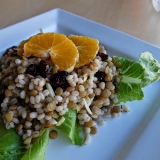
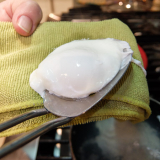
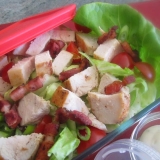

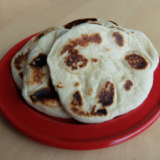
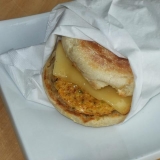
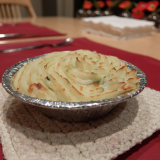
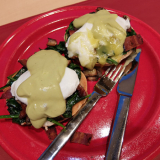

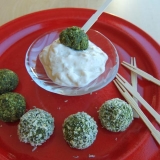
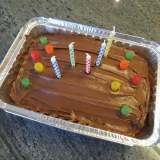
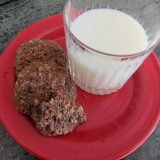

Leave A Comment